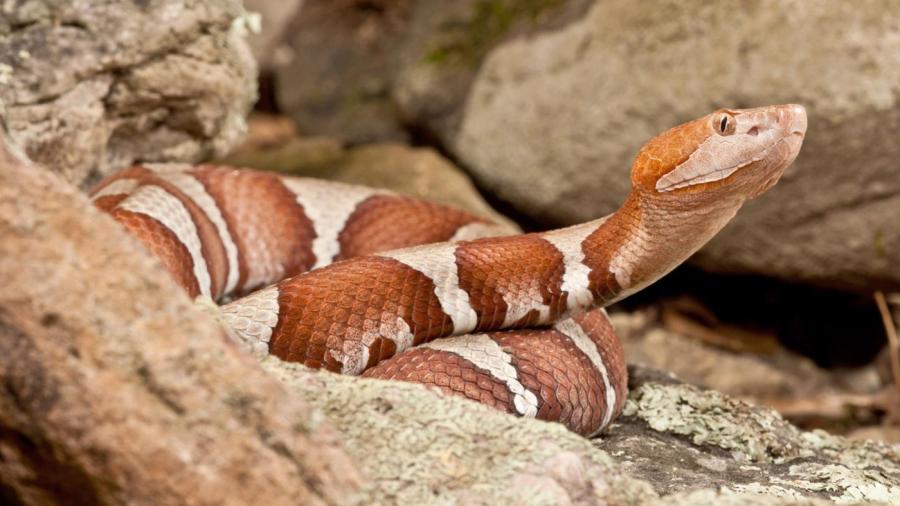What Are Poisonous Snakes in Missouri?

Missouri is home to five venomous snake species: timber rattlesnakes, massasauga rattlesnakes, pygmy rattlesnakes, copperheads and cottonmouths. It is important to note that these snakes are correctly called venomous, rather than poisonous. By definition, venom must be injected by fangs or stingers, while poisons are dangerous if they are eaten or absorbed.
All five of Missouri’s venomous snakes are members of the pit viper subfamily, called Crotalinae. Snakes in this subfamily have two small, thermally receptive pits on their faces, which help them to detect prey. The most commonly encountered venomous snake in the state is the copperhead. Copperheads are common in suburban areas, where they have ready access to their rodent, frog and insect prey. Cottonmouths are closely related to copperheads, but they are usually clad in darker colors and live near permanent water sources. Cottonmouths eat fish, rodents, frogs and snakes.
Timber rattlesnakes are the largest venomous snakes in the state, and they are primarily associated with forested habitats. Timber rattlesnakes are predators of squirrels, birds, rats and mice. Massasauga rattlesnakes are relatively small by rattlesnake standards, reaching 36 inches in length. Pygmy rattlesnakes are even smaller; the largest specimens may only attain 20 inches in length. Both massasaugas and pygmy rattlesnakes consume lizards, frogs, insects and small frogs.





